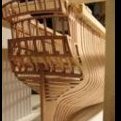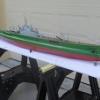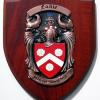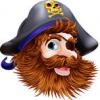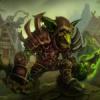-
Posts
1,267 -
Joined
-
Last visited
Reputation Activity
-
 AnobiumPunctatum reacted to Dan Vadas in HMS Vulture 1776 by Dan Vadas - FINISHED - 1:48 scale - 16-gun Swan-class sloop from TFFM plans
AnobiumPunctatum reacted to Dan Vadas in HMS Vulture 1776 by Dan Vadas - FINISHED - 1:48 scale - 16-gun Swan-class sloop from TFFM plans
Binnacle
When I said I was finished, not quite. The Binnacle isn't a part of the main section of TFFM, it's hidden away in the Appendix. Easy to miss .
I knocked it up in a couple of hours. No finish has been applied yet :
Danny
-
 AnobiumPunctatum reacted to guraus in HMS Victory by guraus - scale 1:48 - plank on frame
AnobiumPunctatum reacted to guraus in HMS Victory by guraus - scale 1:48 - plank on frame
Hello all,
Here is another update with the progress over the last couple of weeks.
Alexandru
-
 AnobiumPunctatum reacted to Siggi52 in HMS Dragon 1760 by Siggi52 - FINISHED - Scale 1:48 - English 74-Gun ship
AnobiumPunctatum reacted to Siggi52 in HMS Dragon 1760 by Siggi52 - FINISHED - Scale 1:48 - English 74-Gun ship
Hello,
without much words, the knees are ready. It wasn't so bad as I first thought. Because I had not to dive so deep into the hull. From that point of view were the knees at the gun and upper gun deck the most worse things I had to do.
The next thing to do is to install the cannons with all there tackle.
Regards,
Siggi
-
 AnobiumPunctatum reacted to SawdustDave in Cutter Cheerful 1806 by SawdustDave - FINISHED - 1:48th scale
AnobiumPunctatum reacted to SawdustDave in Cutter Cheerful 1806 by SawdustDave - FINISHED - 1:48th scale
After several hours of careful sanding, I managed to complete the fairing of the bulkheads and move on to installing the gun port sills.
First, seen here, using a temporary batten to mark the smooth alignment of the sills on both sides....
Then carefully cutting and fitting the sills and uprights according to the plan sheets with exactly 17/32nd openings.
Also note that all gun port sills have been faired perfectly flush with the fairing of the bulkheads.
-
 AnobiumPunctatum reacted to Cathead in Bertrand by Cathead - FINISHED - 1:87 - wooden Missouri River sternwheeler
AnobiumPunctatum reacted to Cathead in Bertrand by Cathead - FINISHED - 1:87 - wooden Missouri River sternwheeler
Well, I've returned from the wild and will eventually get back to modelling. First, though, some relevant photos from the Bertrand museum and elsewhere.
A few introductory notes on the museum. As the Bertrand was discovered, and excavated, within DeSoto National Wildlife Refuge, it became the property of the US Fish & Wildlife Service. Thus they built the museum as an add-on to a visitor's center otherwise dedicated to the refuge. It's a nice museum, but not one staffed by "steamboat people", per se. It's just a wing of the larger center. We had very little time there, even less than I had intended, because of the very long drive that day (we had to make it from central Missouri to western Nebraska before dark).
A cute, if primitive, Bertrand model in the lobby.
One of the museum's centerpieces, a large-scale model of Bertrand; me for scale. This is a beautiful model, with complete interior, but in several places it departs rather severely from the archaeological drawings of the boat. The most blatant difference is the relationship between the main deck and the boiler deck just above. In the drawings, and the accompanying documentation, it's concluded that Bertrand's boiler deck extended as far as the width of the main deck and was supported by vertical stanchions between the two, on the very outer edge of the decks. On the model, the stanchions are set well inboard, with a set of curved supports ducked in under the boiler deck. I don't know why the discrepancy exists, since the model was almost certainly made after the excavation (no information was provided).
A painting of the Bertrand, by the same artist/illustrator who drew the graphic reconstructions included in the archaeology reports I'm working from. Note that he portrays the stanchions correctly, as vertical supports at the very outer edge of both decks. EDIT: I forgot to note that the cute, primitive model shown above DOES get the stanchions right.
A nice touch; one wall of the gallery is a full-size outline of Bertrand's aft third (roughly), with an actual paddlewheel hub mounted within. Me for scale.
The gallery includes a huge collection of artifacts salvaged from the wreck, which are a day's worth of contemplation for a history buff. Unfortunately, as you can see by the photos above, the lighting is kept very low for preservation reasons, making photography a real, well, hassle. This shot gives some sense of the gallery's scale. In the foreground are various munitions from the wreck, which I thought might be of interest to some of you. For example, several racks of howitzer shells and a stand of .50 caliber Maynard cartridges. One assumes these were part of consignments for various Army posts on the frontier.
The stretch of river on which the Bertrand sank is no longer part of the mainstem Missouri River, which changed its course quite regularly before being channelized and controlled by the US Army Corps of Engineers. The location is now part of a large oxbow lake, a former bend in the river now cut off by a straighter channel and left as a horseshoe-shaped lake. The site of Bertrand's sinking is on the opposite shore, about as far as you can see.
And here is the actual site, the pit left over from excavation now filled with water and overgrown with shrubbery. Bertrand is still down there; once the teams had recovered the cargo and documented the hull, they left her be. It's perhaps 100 yards in from the old channel, in what used to be a field, where it was left by an early shift in river channel. The active river now is maybe 1/2 mile away.
Finally, a few other images from the trip, most of which was spent hiking in Yellowstone and Grand Tetons National Parks. I could bore you all with lots of imagery of backcountry thermal features, wildlife, and geological eye candy, but will restrain myself to these two, whose relevance should be apparent:
This is Steamboat Point, in the Bighorn Mountains of north-central Wyoming. It's a nice basic climb of 800' vertical feet or so, giving a clear 360 view of the east slop of the Bighorns.
And this is Steamboat Geyser. It erupts unpredictable and rarely, the last eruption being just over a year ago. Here it's just steaming in the cool, crisp, morning air, but even so it reminds one of a boiler hissing away gently, awaiting the engineer's touch to build pressure once more.
Next up for my version of the Bertrand are the engines, for which more research and planning is needed. I also need to get everything else in life back under control after two weeks away. But I hope you all enjoy the images above.
-
 AnobiumPunctatum got a reaction from mtaylor in Young America 1853 by EdT - FINISHED - 1:96 - POB - extreme clipper
AnobiumPunctatum got a reaction from mtaylor in Young America 1853 by EdT - FINISHED - 1:96 - POB - extreme clipper
It's allways fascinating to follow your logs. I've learned a lot fromin the past years. Thanks
-
 AnobiumPunctatum reacted to archjofo in La Créole 1827 by archjofo - Scale 1/48 - French corvette
AnobiumPunctatum reacted to archjofo in La Créole 1827 by archjofo - Scale 1/48 - French corvette
Hello Dirk,
do not worry, I am not bored ...
Hello Joe, Carl and Mark
I am very pleased about your nice comments, thanks!
Here is a small update:
-
 AnobiumPunctatum reacted to cabrapente in Le Francois by cabrapente
AnobiumPunctatum reacted to cabrapente in Le Francois by cabrapente
Hello Michel. I'm doing a 1 / 48.francoise
progress of the day
-

-
 AnobiumPunctatum got a reaction from Piet in Young America 1853 by EdT - FINISHED - 1:96 - POB - extreme clipper
AnobiumPunctatum got a reaction from Piet in Young America 1853 by EdT - FINISHED - 1:96 - POB - extreme clipper
It's allways fascinating to follow your logs. I've learned a lot fromin the past years. Thanks
-
 AnobiumPunctatum reacted to EdT in Young America 1853 by EdT - FINISHED - 1:96 - POB - extreme clipper
AnobiumPunctatum reacted to EdT in Young America 1853 by EdT - FINISHED - 1:96 - POB - extreme clipper
Young America 1853 – POB 1:96
Part 20 – Knightheads
The knightheads reinforced the stem on either side and provided a base for securing the hawse timbers that formed the forward hull back to the first cant frames. This detail is shown in the posts for the full framed version of the model. Rising above the top of the sides, the knightheads also provided lateral support to the bowsprit. To accommodate the 36” square section of the bowsprit, additional space was provided between knightheads by additional members, 10” thick stem timbers, bolted to the sides of the stem assembly. The two 10” stem timbers astride the 16” thick stem provided the necessary 36” spacing for the bowsprit.
On the POB model only the upper parts of the knightheads and stem timbers were modeled. In the first picture their patterns have been pasted to the correct size stock.
As with all of the stock for this demonstration model, ¾” wood was used, allowing all the thicknesses to be cut on a good model circular saw. This was done to allow the model to be made from readily available stock without the need for a thickness sander/planer – a rather expensive tool and not one that beginning scratch builders might have. In the next picture the members have been cut out and given an initial bevel based on the pattern lines.
These were cut from hard maple. The knightheads will be exposed on the model but painted black. The members to the right are shown in their relative positions. In the next picture the starboard head timber is being fitted into the space between the stem and the most forward bulkhead.
To prepare for this, the pine spacers forward of the first bulkhead were removed by sawing and paring with a straight chisel. These spacers had been installed to protect the forward bulkhead during initial rough fairing of the hull.
In the next picture the breadth across the installed head timbers is being checked for the eventual fit of the bowsprit.
At 1:96 the breadth needs to be 3/8”. This precise breadth was obtained by sanding the sides of the members after they were glued in. In the next picture the port knighthead is being glued into place.
With both knightheads firmly secured they could be faired into the stem rabbet. In the next picture a gouge is being used for this.
With the shape roughed out with the gouge, a curved rasp was used to refine it – as shown below - followed by 120-grit sandpaper.
With the knightheads in place and faired, the topside planking could begin.
Ed
-
 AnobiumPunctatum got a reaction from GLakie in Young America 1853 by EdT - FINISHED - 1:96 - POB - extreme clipper
AnobiumPunctatum got a reaction from GLakie in Young America 1853 by EdT - FINISHED - 1:96 - POB - extreme clipper
It's allways fascinating to follow your logs. I've learned a lot fromin the past years. Thanks
-

-
 AnobiumPunctatum reacted to gjdale in Bomb Vessel Granado 1742 by gjdale - FINISHED - 1/48 - Cross-Section
AnobiumPunctatum reacted to gjdale in Bomb Vessel Granado 1742 by gjdale - FINISHED - 1/48 - Cross-Section
Mortar Barrel continued....
Once the barrel had been bored, it was time to part off the workpiece to its final length and shape the base end. A mandrel was then turned down from some aluminium bar stock, so that it was an easy slide fit in to the barrel, and this was then drilled with a 3/32” end mill, using the same set-up on the Mill as previously. The mandrel was then placed inside the barrel and a securing pin of 3/32” brass rod was inserted to hold the mandrel securely in place. The pin was a tight push fit, which made the whole assembly quite secure.
Now it was time to break out the “secret weapon”. The base of the Mortar Barrel is a hemisphere in shape. I’d been pondering how to achieve this, when I discovered that Sherline make a “Radius Turning Attachment” for exactly this purpose. Happy days – a solution to my quandary AND a new accessory!
Here is a picture of the setup, showing the mortar barrel being held in a 3-jaw self-centring chuck by the temporary mandrel. The radius turning tool is mounted on the cross slide and is quick and easy to set-up and to use. In this picture, I’ve already started to shape the end, having taken the first couple of passes with the tool.
A few minutes later and voilà, a perfect hemisphere:
Prior to commencing to use the radius turning tool, I had used a small centre drill to mark the centre of the end of the base. Once the radius had been turned, a 3/16” end mill was inserted in the tailstock, and a hole drilled to a depth of 5/16” – the reason will become clear shortly.
With this hole drilled, the workpiece was again moved across, with the chuck, onto the rotary table on the Mill, this time mounted in the horizontal position. The 3/16” end mill was transferred to the Mill and the previously bored hole was used to index the mill table into alignment. The pin in the mandrel was used as a guide to align the barrel such that a slot could now be cut at 90-degrees to the pin. In the following picture, the slot has already been cut to the depth of the previously bored hole (ie 5/16”).
The base of the mortar barrel is an interesting configuration, and includes the trunnion bar that also blends into the mortar barrel body. I elected to make this in two pieces, both from 3/16” square stock. The first piece would carry a trapezoid shape to blend into the barrel body, while the second piece would have its end turned into a cylindrical shape to form the trunnions. Sounds complex, but was really quite easy. A piece of 1/4" square stock was first re-sized to 3/16” square using the Brynes disc sander. The trapezoid shape was also achieved using the disc sander, while the trunnion bar was simply turned down on each end in the lathe. Here is a picture of the components prior to assembly:
The pieces were then assembled and the mandrel and locating pin removed. The hole from the locating pin was filled by a mixture of PVA glue and some of those ebony shavings saved from the first part of the process. Two handles were made by bending a piece of 1/32” brass wire, chemically blackened and epoxied in place. Here is the final product prior to receiving a coat of Wipe-On Poly:
And here it is with a “test” fit to the Turntable:
The completed assembly was given a coat of Wipe-On Poly, and then posed in the firing position for a few final photos (the poly is not yet dry here, hence the slight sheen):
All in all, I’m well pleased with the way this turned out. Time spent up front measuring and working out the workflow process was well invested, as was the money spent on the radius turning attachment. Amazingly, there were no re-dos in the entire process! Next up – the 4-pounder guns and carriages.
-

-
 AnobiumPunctatum got a reaction from CaptainSteve in THE 74-GUN SHIP by Jeronimo
AnobiumPunctatum got a reaction from CaptainSteve in THE 74-GUN SHIP by Jeronimo
Great, really great.
-
 AnobiumPunctatum reacted to rafine in Cutter Cheerful 1806 by rafine - FINISHED
AnobiumPunctatum reacted to rafine in Cutter Cheerful 1806 by rafine - FINISHED
Lower hull planking progresses. Chuck says that Cheerful can be planked without spiling by edge bending the planks (and has proved it beautifully on his own model). Well, so far, so good. I have now done the upper belt of the port side lower planking. While it doesn't look anywhere as good as Chuck's, I'm reasonably satisfied.
Each plank was first tapered, then bent, then edge beveled where necessary for a tight fit. I followed the butt pattern shown in the plans.I must admit that it's hard to teach an old dog new tricks, and I went back to my old methods of plank bending, using water and heat, rather than the method used and shown by Chuck. In any event, it's now on to the same work on the starboard side.
Bob
-
 AnobiumPunctatum reacted to EdT in Young America 1853 by EdT - FINISHED - 1:96 - POB - extreme clipper
AnobiumPunctatum reacted to EdT in Young America 1853 by EdT - FINISHED - 1:96 - POB - extreme clipper
Young America 1853 – POB 1:96
Part 19 – Planksheer
In the angle between the toptimbers and main deck beams, a massive 12” x 11” waterway was fit to reinforce the deck beam connections to the frames and to provide a watertight seal around the outer deck planking. The planksheer was a large member that fit directly on top of the waterway and enclosed the toptimbers. It provided a watertight cap over the hull frames, waterway and outboard planking. It was wide enough to show as a molded rail both outboard and inboard. It was either mortised to fit down over the toptimbers or, more likely, made in two parts that were notched to fit both inside and outside, then bolted through horizontally. On the model, I installed the planksheer as spacers between the toptimbers capped by rails inside and out.
Since the planksheer rests on the waterway which in turn rests on the deck beams, I believe the height of the planksheer is most accurately set by fitting the inboard rail first. The height was set using a temporary pine spacer cut to the depth of the waterway. This is shown in the first picture.
Why not install the waterway first, then the planksheer? If the model is to be painted, the waterway will be painted blue, the inboard works, including the adjoining inboard planksheer rail white. To avoid having to cut in sharp paint lines after construction, I wanted to paint the white then install the pre-painted blue waterway below it. The natural finish decking would later be installed against the blue waterway. The sequence to accommodate painting is also described in the posts for the 1:72 framed model – as well as in detailed in the book. The inside rails were molded using a scraper and cut to size as described for the larger version.
With the inside planksheer rail glued in place to the toptimbers, spacers between toptimbers were cut and fitted – glued to the outboard face of the inner rail and end glued between toptimbers. In the next picture, these spacers have been installed and their outer edges are being faired to the outside of the frames.
In the next picture the tops of the spacers are being filed flush with the top of the inside rail. The upper face of the rail is horizontal in the athwartship direction.
Before the outer part of the planksheer or any exterior planking could be installed, it was necessary to fit the knightheads. I will describe that work in the next part.
Ed
-
 AnobiumPunctatum reacted to Remcohe in HMS Kingfisher 1770 by Remcohe - 1/48 - English 14-Gun Sloop - POF
AnobiumPunctatum reacted to Remcohe in HMS Kingfisher 1770 by Remcohe - 1/48 - English 14-Gun Sloop - POF
Slowly progressing.
Some special knees half way down the hull
And the progress to date
The pump well I had made years ago got a bit beaten up in storage. As I also was not very happy with some of the dimension of the stock I used I decided to make a new one.
I made a jig to make accurate cuts for the dado's on the stanchions, it's hard to see but at the far side where the blade cuts is a thin strip of wood the width of the blade to mak each cut at the same distance.
The finished stanchions, the vertical dado's were milled.
Remco
-
 AnobiumPunctatum reacted to Jeronimo in THE 74-GUN SHIP by Jeronimo
AnobiumPunctatum reacted to Jeronimo in THE 74-GUN SHIP by Jeronimo
Hello friends.
The residual frames built in, aligned and sanded
into the required shape of the hull.
Karl
Teil 4
-
 AnobiumPunctatum reacted to Siggi52 in HMS Dragon 1760 by Siggi52 - FINISHED - Scale 1:48 - English 74-Gun ship
AnobiumPunctatum reacted to Siggi52 in HMS Dragon 1760 by Siggi52 - FINISHED - Scale 1:48 - English 74-Gun ship
Hello,
it is done, the last cannons are ready. Six at all. But before I could install them, I have to build all the knees for the deck beams and they are so tiny here
Regards,
Siggi
-
 AnobiumPunctatum got a reaction from Eddie in HM Sloop Fly by AnobiumPunctatum - 1:32 - POF
AnobiumPunctatum got a reaction from Eddie in HM Sloop Fly by AnobiumPunctatum - 1:32 - POF
I've finished the "Disposition of Frames" drawing.
I am not quite happy with the position of the timberheads between station line 17 and 19. But this is the position I got from the As Built plan of the Fly.
Next I will built my building board and start with the model.
-
 AnobiumPunctatum reacted to Erebus and Terror in HMS Terror by Erebus and Terror - FINISHED - Scale 1:48 - POB - as fitted for polar service in 1845
AnobiumPunctatum reacted to Erebus and Terror in HMS Terror by Erebus and Terror - FINISHED - Scale 1:48 - POB - as fitted for polar service in 1845
BUILDING A BOARD
My most recent sub-project has involved constructing a “building board,” essential for accurately aligning the bulkheads with the false keel of my model. The board needs to keep the false keel perfectly straight and perpendicular, while providing a flat surface for gluing the bulkheads at right angles to the keel.
I started the board by cutting a 1/4“ groove into a 32" long piece of MDF sheet. The groove is just slightly deeper than the false keel on the model, providing a full view of the rabbet, and fits tightly so that the keel remains perfectly straight.
Marking the groove on the MDF sheet. The board is 12" x 32 ".
I cut the groove into the board with a table saw. MDF is brittle, so care is needed at this stage.
The stern and stem of the model also needed to be kept perpendicular to the board. To achieve this, I designed two supports, one for the stern and one for the stem, which would slot into the building board groove. I used a laser cutter to make these from 1/4” MDF sheet; they fit together somewhat like a piece of Ikea furniture.
My custom plans for the stem and stern supports. The idea for the interlocking pieces came from children's toys.
Cutting the pieces from 1/4 " MDF. My local library provides a 60 watt laser cutter for public
use.
The pieces after cutting.
The finished supports (stem on left, stern on right).
It's hard to see, but the support has a rail designed to fit into the groove for proper alignment.
The supports were glued into place, and their alignment was double-checked with a square.
I lined the groove with painter's masking tape to prevent damage to the model's keel.
I lined the supports with masking tape as well.
The finished building board.
Instead of using set screws, which might damage the model, I used rubber bands to secure
the model in place. In practice, the fit was tight enough that rubber bands weren't really
necessary.
The bulkheads fit tightly and relatively squarely, but it was necessary to use a carpenter's square to
ensure that they were at perfect right angles to the keel. These stainless steel squares from
Lee Valley were perfect for the task.
The second-to-last last bulkhead is put in place.
The completed superstructure. It's hard to see here, but two of the forward stations have
alignment issues at the area of the chock channels and bulwarks and will need to be
sanded and/or modified with trim. I double checked the plans, and the errors, around
1.5 mm off, seem to have crept in from my original measurements. These errors weren't
large enough to force me to re-cut the stations.
I'm quite happy with the alignment (the stern looks slightly twisted here, but it's
just a trick caused by the camera angle).
Midships bulkheads at the position of the rabbet.
A view of the bottom of the ship. Again, I'm quite pleased with the alignment
(the stem and stern are still little wobbly and will need some filling blocks).
Mini-Crozer stands on his deck. It's been a long time.
Mini-Crozier inspects the stern, noting that work is needed on the bearding line.
Though Terror was small by Royal Navy standards, a 102 foot ship was still a
substantial vessel, as this image indicates.
Mini-Crozier stands at the Captain's sacred spot on the quarterdeck.
Now that the bulkhead of the model is finally assembled, I can move towards planking it. A significant amount of fairing is necessary, and I hope to finish that shortly. Meanwhile, I've almost completed the "Phillips' Patent Capstan", and I hope to reveal my plans and model here soon.
P.S. If you are interested in some new cabin accommodation plans for the lower deck, please see my blog (in my signature).
-
 AnobiumPunctatum reacted to yamsterman in WASHINGTON GALLEY by yamsterman - 1/48 scale - POF
AnobiumPunctatum reacted to yamsterman in WASHINGTON GALLEY by yamsterman - 1/48 scale - POF
WASHINGTON GALLEY PART 6........FIRST FRAME IS RAISED!!!!
HI ALL
HAVING MADE THE LAST HALF FRAME AFT I DECIDED IT WAS PERHAPS WISE TO RAISE THIS FRAME FIRST
THE SINGLE AFT CANT FRAMES LEADING EDGE BUTTS UP AGAINST THE REAR FACE OF THIS FRAME SO IT MAKES SENSE.
I CAN THE WORK TOWARDS MIDSHIPS WITH THE REST OF THE AFT HALF FRAMES. I MAY THEN SWITCH MY ATTENTION TO THE FORWARD CANT AND HALF FRAMES AND THE DREADED HAWSE PIECES.
MIDSHIPS FRAMES ARE FROM ( 6 FRAMES FORWARD OF DEADFLAT AND 6 FRAMES AFT OF DEADFLAT) ALL THE SAME BASIC SHAPE WITH NO BEVEL. THE HEIGHTS ARE SLIGHTLY DIFFERENT,TO ACCOUNT FOR THE SHEER,AND SOME HAVE RECESSES FOR THE GUNPORT SILLS AND SWEEP PORTS.......BATCH PRODUCTION TIME!
SO THATS WHERE I AM AT THE MOMENT.....TIME FOR A CELEBRATORY SNIFTER
PHOTOS OF THE FRAME RAISING FOR YOUR DELICTATION
CHEERS........MICK
-
 AnobiumPunctatum reacted to tlevine in HMS Atalanta 1775 by tlevine - FINISHED - 1:48 scale - from TFFM plans
AnobiumPunctatum reacted to tlevine in HMS Atalanta 1775 by tlevine - FINISHED - 1:48 scale - from TFFM plans
I held off on fabricating the brake pumps because of their fragility and small size. I know I will lose them so they will be made when I am ready to install them. My approach to the rhodings is not quite prototypical. Because they are black and the axletree is also black, detail is difficult to see, so I went for ease of construction. The rhoding on the main jeer bitt is a simple brass strap that has been cinched around the axletree and glued to the bitt. There is a spacer block between the main topsail sheet bitt and the rhoding. The spacer block is wood that has been shaped and painted black. The rhoding is another brass strap. I have drilled the bitt to represent the bolts holding the spacer block/rhoding assembly. In the picture these have not been blackened yet.
I put together another short length of chain and inserted it into the port pump tube.
There are two athwartship bulkheads aft. So far, everything on the starboard side has been left open to highlight the structure. I am changing course and building the bulkheads port and starboard. I am toying with the idea of furnishing these cabins. First, stubs of deck planking are laid to support the bulkhead. Then, card templates are made. The bulkhead will be made sandwich fashion, with outer wood planking and a "meat" of template. There is a big color difference between the old and new planking. All this planking came from the same sheet of holly. The rest of the planking was installed in July, 2014 (page 29 of this log). Since I will not be permanently installing the bulkheads for some months, hopefully the colors will blend together.




